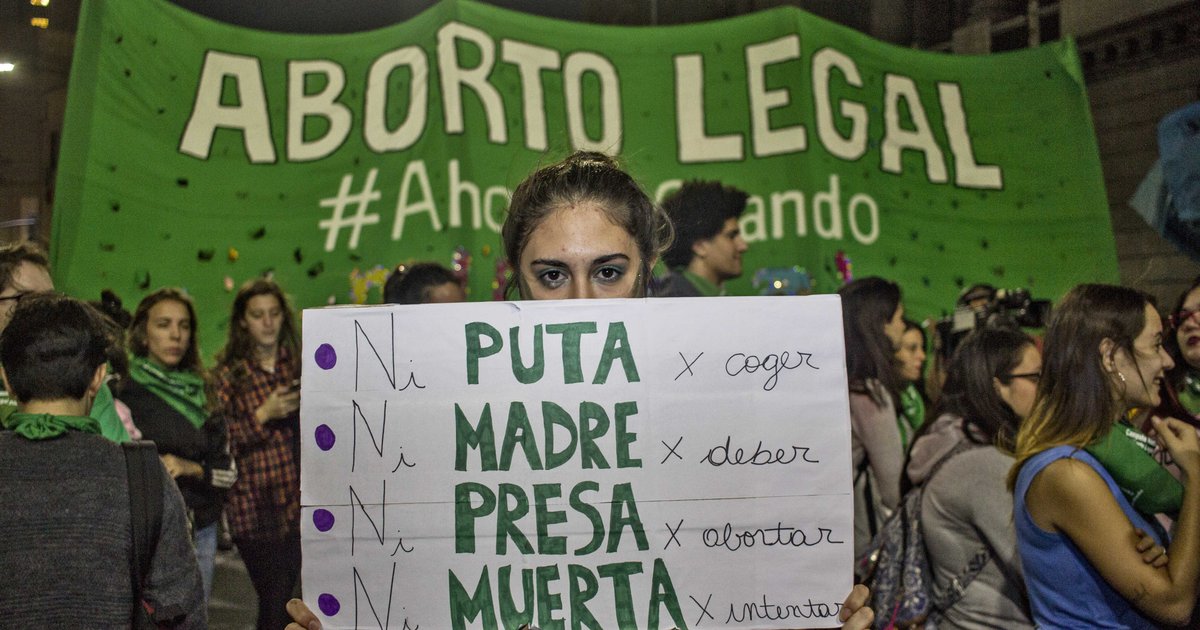
Six days ago, the Argentine Chamber of Deputies approved the voluntary termination of the pregnancy project. This opens the debate, again, on the legalization of abortion in Latin America.
According to the Global Abortion Database of the World Health Organization, access to abortion in the region is restricted. Each country has its conditions and vetoes that, in the end, end up taking away women’s possibility to decide about their bodies and future freely.
That is why the video of hundreds of women gathered in the Congress plaza in Argentina waving green scarves and celebrating upon hearing the final vote on the bill that seeks to give free access to voluntary termination of pregnancy up to the fourteenth week of gestation has been a trend in social networks and generated a new wave of illusion among thousands of Latin American women who dream that safe abortion is a right.
The bill received 131 votes in favor and 117 against, after a debate that lasted 20 hours. In the following weeks, it must be voted in the Senate for final approval.
Today, Argentine law allows abortion when a pregnancy poses a serious risk to the mother’s health or in cases of rape. In the region, Bolivia and Colombia are the countries where the possibility of abortion is legal in more cases: if the viability of the fetus is not safe, in cases of rape, incest, and if there is any threat to the life or physical and mental health of the woman.
In other countries such as Uruguay and Cuba, the open-access law presumes that women can decide at their discretion. In Chile’s case, abortion was decriminalized only three years ago and focuses on whether a pregnancy is a threat to the woman’s life.
In Costa Rica, it is only authorized to be a danger to the woman’s physical health. In other more extreme contexts, such as Guatemala and Paraguay, women can have an abortion if they can prove that their life is in danger. Thus, the difference lies in who bears the burden of proof. In other words, the real debate is whether a woman can always decide whether she wants an abortion or whether she must prove that her case fits one of the grounds covered by each country’s laws.
The problem with this scenario is that it authorizes individuals and institutions that are not pregnant women to certify whether those conditions are met. The result is that thousands of women decide to look for places where they can have a clandestine abortion that, in the majority of cases, does not comply with the health standards for these procedures, putting their health and lives at risk.
There are also the cases of women who decide to have these clandestine abortions without any medical supervision, but at home, with medicines or elements that could cause their death.
According to The Lancet, in a global and regional study of abortion classifications by safety, there are about 60 million abortions a year worldwide. It also states that the proportion of abortions that can be considered safe for women varies from country to country due to the degree of restriction that governs the procedure in each country.
Cases like El Salvador’s, where 22 women are in prison, convicted or on trial for abortion, cannot go unnoticed. In this case, the United Nations stated that the Salvadoran Penal Code affects “disproportionately poor women.” This is key; according to an article by the International Planned Parenthood Federation (IPPF), millions of women lack access to reproductive health services, which means that many have little or no power to decide whether to become pregnant.
The result is that each year, nearly 19 million women undergo unsafe abortions in a region where clandestine abortions cause almost 13 percent of all maternal deaths.
According to the World Health Organization, WHO, between 2010 and 2014, there were 25 million unsafe abortions worldwide, representing 45% of all abortions. The majority of unsafe abortions, 97%, occurred in developing countries in Africa, Asia, and Latin America. The organization has also emphasized that in countries where abortion is completely prohibited or permitted only to save the woman’s life or preserve her physical health, only one in four abortions is safe.